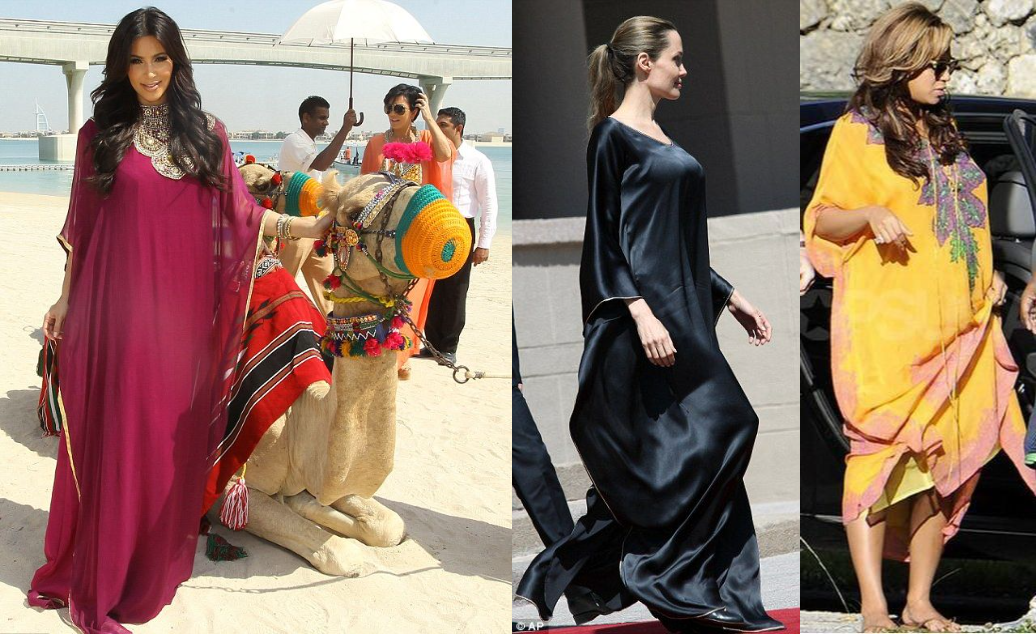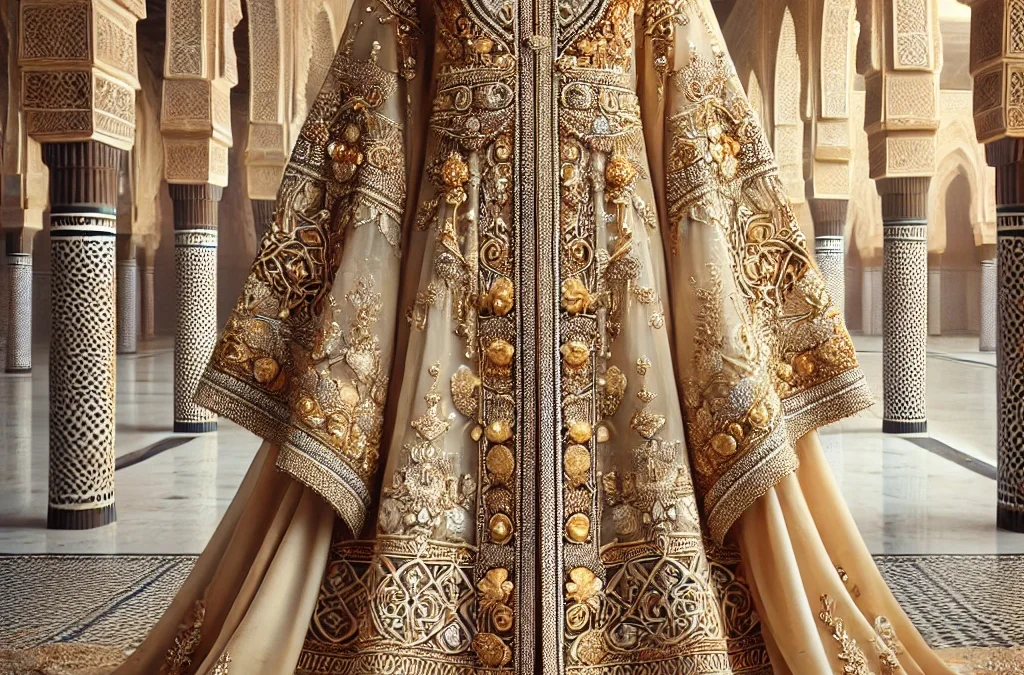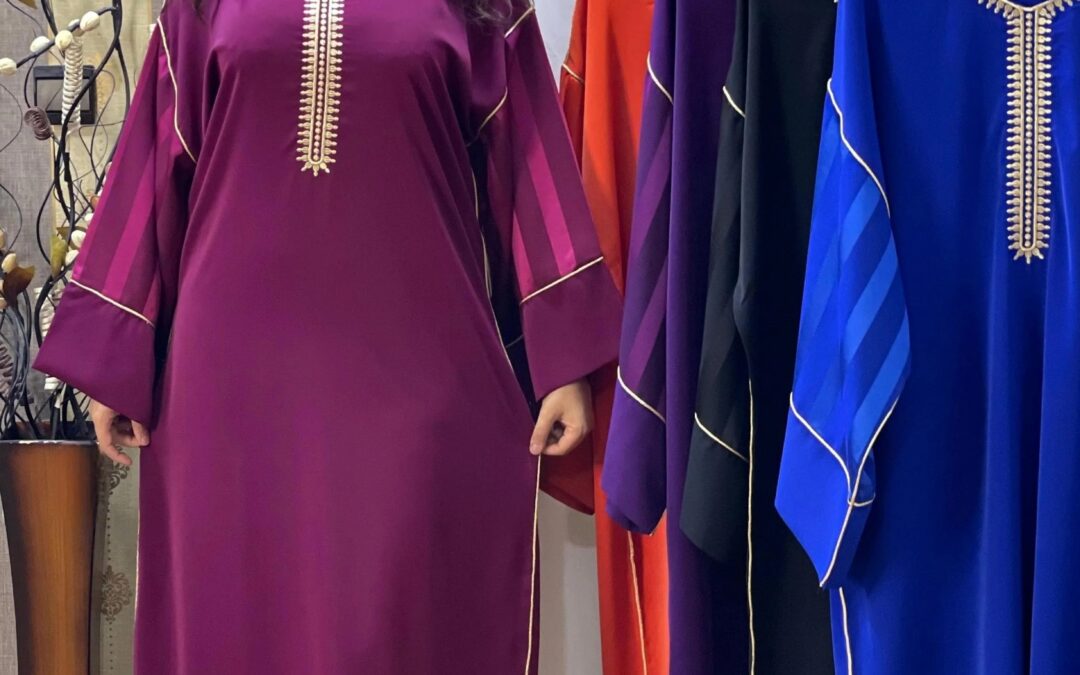
Moroccan Caftan Dress
The Moroccan caftan, a symbol of elegance and cultural heritage, has transcended its traditional roots to become a global fashion statement. This long, flowing garment, often adorned with intricate embroidery and beadwork, reflects Morocco’s rich history and artisanal craftsmanship.
Historical Significance and Craftsmanship
Originating in the 16th century, the Moroccan caftan was initially a garment of the elite, symbolizing status and refinement. Over the centuries, it has evolved, incorporating diverse fabrics, colors, and embellishments, yet it remains a staple in Moroccan culture, especially during significant events like weddings and religious celebrations. The creation of a caftan is a meticulous process, often involving months of hand embroidery, the incorporation of precious stones, and the use of luxurious fabrics, resulting in a masterpiece that embodies both tradition and modernity.
Global Appeal and Celebrity Endorsement
The allure of the Moroccan caftan has captivated international celebrities, further propelling its status in the global fashion arena. Notable figures such as Beyoncé, Paris Hilton, Kim Kardashian, Angelina Jolie, and Jennifer Lopez have been spotted donning Moroccan caftans, showcasing their versatility and timeless elegance. For instance, during a visit to Morocco, Beyoncé was seen wearing a traditional Moroccan caftan, highlighting her appreciation for the country’s cultural attire. Similarly, Kim Kardashian has been photographed in a Moroccan caftan, embracing the garment’s unique blend of comfort and sophistication. These endorsements have introduced the caftan to diverse audiences, blending Moroccan tradition with contemporary fashion trends.
Modern Interpretations and Fashion Events
Designers worldwide have embraced the Moroccan caftan, infusing it with modern elements while honoring its traditional essence. Fashion events such as the annual “Caftan” show in Morocco celebrate this fusion, where designers present innovative interpretations of the classic garment. These events not only preserve the cultural significance of the caftan but also adapt it to contemporary aesthetics, ensuring its relevance in today’s fashion landscape.
Cultural Preservation Through Fashion
The global popularity of the Moroccan caftan underscores the importance of cultural preservation through fashion. As designers and celebrities continue to embrace this traditional attire, they contribute to a broader appreciation and understanding of Moroccan heritage. The caftan serves as a testament to the country’s history, artistry, and the seamless blend of tradition with modernity.
In essence, the Moroccan caftan is more than a garment; it is a cultural emblem that has gracefully woven itself into the fabric of global fashion, symbolizing elegance, tradition, and the rich tapestry of Moroccan artistry.

Moroccan Caftan Dress
Antique caftans, with their rich history and intricate craftsmanship, have become highly sought-after collectibles in the fashion world. While specific record-breaking sales of antique caftans are not widely documented, the market for vintage and antique garments has seen remarkable transactions that underscore the value placed on historically significant attire.
One notable example is the sale of a 1940s Moroccan antique caftan, crafted from gold damask and adorned with exquisite embroidery. This piece was listed at $1,850, highlighting the premium collectors are willing to pay for garments that exemplify cultural heritage and artisanal excellence.
In the broader context of vintage fashion, auction houses have facilitated the sale of iconic garments at impressive prices. Kerry Taylor, a renowned fashion auctioneer, has handled numerous high-profile sales, including Princess Diana’s midnight blue velvet gown worn during her dance with John Travolta at the White House in 1985, which sold for £220,000. While this gown is not a caftan, its sale reflects the significant value attributed to garments with historical and cultural significance.
The market for antique caftans continues to thrive, with collectors and fashion enthusiasts seeking pieces that offer a tangible connection to the past. As appreciation for traditional textiles and designs grows, it is anticipated that the value and demand for antique caftans will continue to rise, solidifying their status as treasured artifacts in the world of vintage fashion

Moroccan Caftan Dress
The Moroccan Caftan: Centuries of Tradition and Distinction
The Moroccan caftan is more than just a piece of clothing; it is a symbol of heritage, elegance, and craftsmanship. Rooted in centuries of tradition, the caftan has evolved from its historical origins to become a celebrated garment in modern fashion. This iconic dress is known for its luxurious fabrics, intricate embroidery, and timeless appeal, making it a staple of Moroccan culture and a source of pride for generations of women.
The Origins of the Moroccan Caftan
The history of the Moroccan caftan dates back to the time of the Moors and the Andalusian era. It was introduced to Morocco by the Merinid dynasty in the 13th century, influenced by the rich textiles and fashion of Al-Andalus. Over time, Moroccan artisans adapted and refined the caftan, blending local craftsmanship with influences from Ottoman, Persian, and Berber cultures. What was once a garment reserved for royalty and the elite gradually became an essential part of Moroccan fashion.
Craftsmanship and Design
Moroccan caftans are renowned for their exquisite craftsmanship. Made from luxurious fabrics such as silk, velvet, satin, and brocade, they are often adorned with delicate embroidery, sequins, and hand-sewn pearls. The art of making a caftan involves techniques such as Tarz (embroidery), Sfifa (decorative trimming), and Aqaad (handmade buttons), all of which require the expertise of skilled artisans.
The caftan is unique because of its ability to be both traditional and modern. While classic designs emphasize regal elegance, contemporary designers have introduced new elements, such as bold cuts, modern tailoring, and fusion styles that incorporate Western influences.
The Caftan in Moroccan Culture
The caftan holds a special place in Moroccan society, particularly for weddings, religious celebrations, and special occasions. Brides often wear elaborate caftans, sometimes layered over other traditional garments, such as the Takchita, which consists of two layers: a simple dress underneath and a more ornate, embroidered outer layer. These garments symbolize femininity, grace, and social status.
Over time, the caftan has become a national emblem of Moroccan identity. It is worn with pride during cultural events, official ceremonies, and international fashion showcases, representing the beauty of Moroccan heritage.
The Moroccan Caftan on the Global Stage
The Moroccan caftan has transcended borders, gaining recognition in the global fashion industry. International designers and celebrities have embraced its elegance, showcasing Moroccan-inspired creations on red carpets and runways worldwide. Events such as Caftan du Maroc, an annual fashion show dedicated to the evolution of the caftan, have helped solidify its status as a high-fashion garment.
Moreover, modern adaptations of the caftan have been featured in major fashion houses, with designers incorporating Moroccan motifs into haute couture collections. Its intricate detailing and luxurious appeal continue to inspire fashion enthusiasts across the world.
Conclusion
The Moroccan caftan is a timeless masterpiece that embodies centuries of history, artistry, and cultural significance. Its evolution from a royal garment to a globally admired fashion statement showcases its adaptability and enduring charm. As Moroccan designers continue to innovate and blend tradition with modernity, the caftan remains a symbol of distinction, elegance, and national pride.
Whether worn at a wedding, a cultural celebration, or an international runway, the Moroccan caftan continues to captivate and inspire, ensuring its legacy for generations to come.



